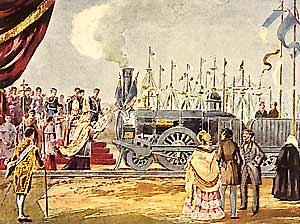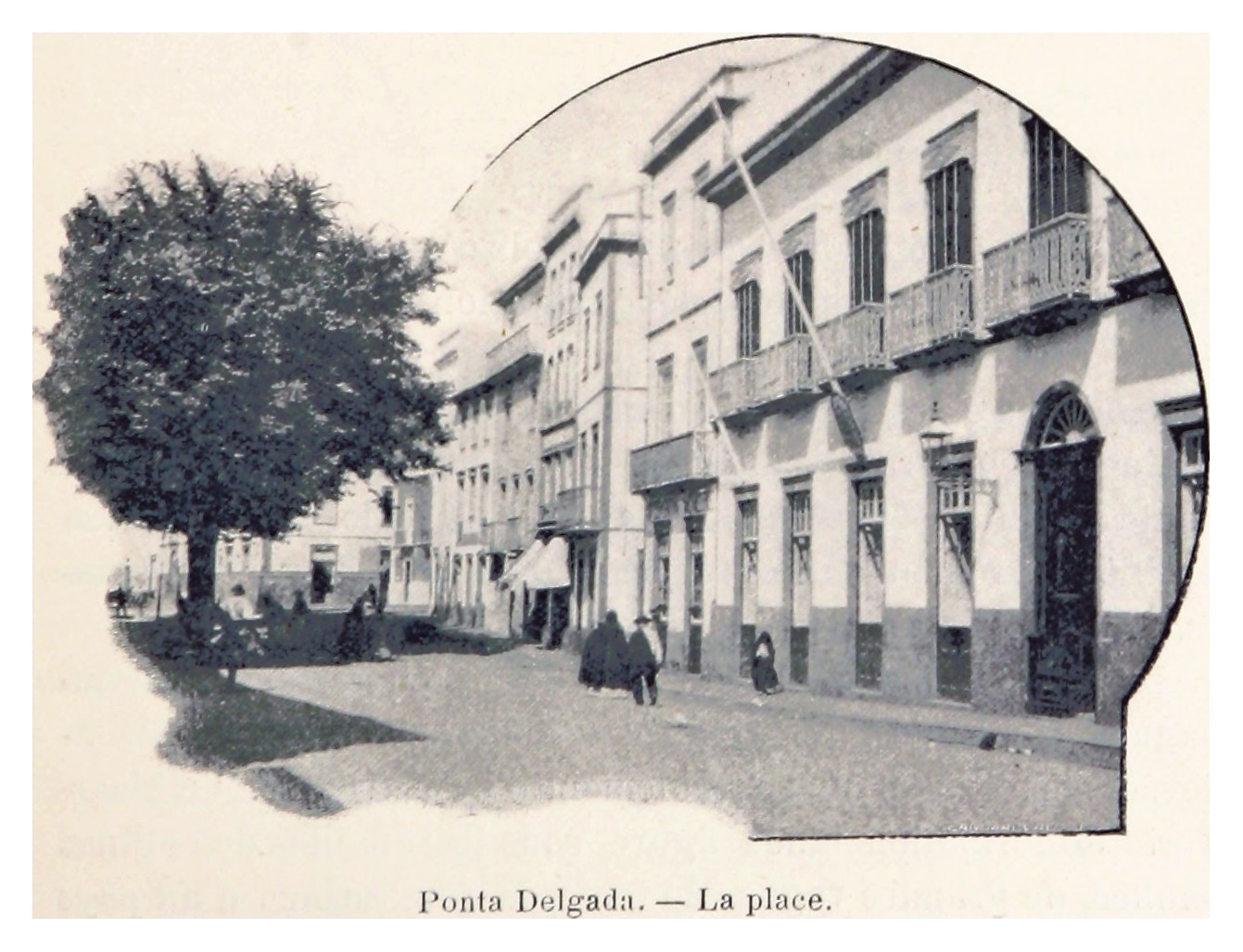|
Iberian-gauge Railways
Iberian gauge ( es, ancho ibérico, trocha ibérica, pt, bitola ibérica) is a track gauge of , most extensively used by the railways of Spain and Portugal. This is the second-widest gauge in regular use anywhere in the world. The Indian gauge, , is wider. As finally established in 1955, the Iberian gauge is a compromise between the similar, but slightly different, gauges adopted as respective national standards in Spain and Portugal in the mid-19th century. The main railway networks of Spain were initially constructed to a gauge of six Castilian feet. Those of Portugal were instead built to a and later railways to a gauge of five Portuguese feet – close enough to allow interoperability with Spanish railways. Standard gauge Since the beginning of the 1990s new high-speed passenger lines in Spain have been built to the international standard gauge of , to allow these lines to link to the European high-speed network. Although the 22 km from Tardienta to Huesca (pa ... [...More Info...] [...Related Items...] OR: [Wikipedia] [Google] [Baidu] |
Track Gauge
In rail transport, track gauge (in American English, alternatively track gage) is the distance between the two rails of a railway track. All vehicles on a rail network must have wheelsets that are compatible with the track gauge. Since many different track gauges exist worldwide, gauge differences often present a barrier to wider operation on railway networks. The term derives from the metal bar, or gauge, that is used to ensure the distance between the rails is correct. Railways also deploy two other gauges to ensure compliance with a required standard. A '' loading gauge'' is a two-dimensional profile that encompasses a cross-section of the track, a rail vehicle and a maximum-sized load: all rail vehicles and their loads must be contained in the corresponding envelope. A '' structure gauge'' specifies the outline into which structures (bridges, platforms, lineside equipment etc.) must not encroach. Uses of the term The most common use of the term "track gauge" refers to t ... [...More Info...] [...Related Items...] OR: [Wikipedia] [Google] [Baidu] |
Loading Gauge
A loading gauge is a diagram or physical structure that defines the maximum height and width dimensions in railway vehicles and their loads. Their purpose is to ensure that rail vehicles can pass safely through tunnels and under bridges, and keep clear of platforms, trackside buildings and structures. Classification systems vary between different countries, and gauges may vary across a network, even if the track gauge is uniform. The term loading gauge can also be applied to the maximum size of road vehicles in relation to tunnels, overpasses and bridges, and doors into automobile repair shops, bus garages, filling stations, residential garages, multi-storey car parks and warehouses. A related but separate gauge is the structure gauge, which sets limits to the extent that bridges, tunnels and other infrastructure can encroach on rail vehicles. The difference between these two gauges is called the clearance. The specified amount of clearance makes allowance for wobbling o ... [...More Info...] [...Related Items...] OR: [Wikipedia] [Google] [Baidu] |
History Of Rail Transport In Spain
:''This article is part of the history of rail transport by country series'' The history of rail transport in Spain begins in the 19th century. In 1848, a railway line between Barcelona and Mataró was inaugurated,Significant events in the history of Spanish infrastructures and railways ''www.fomento.es'' although a line in Cuba (then a Spanish overseas province) connecting Havana and Bejucal had already opened in 1837. In 1852 the first narrow gauge line was built, in 1863 a line reached the Portuguese border. By 1864 the Madrid-Irun line had been opened, and the French border reached. In 1911 the first line to be electrified was the Gergal-Santa Fe line In 1941 [...More Info...] [...Related Items...] OR: [Wikipedia] [Google] [Baidu] |
History Of Rail Transport In Portugal
The history of rail transport in Portugal dates from 28 October 1856, when Portugal's first railway line was opened between Lisbon and Carregado: the ''Companhia dos Caminhos de Ferro Portugueses''. The network was gradually expanded both south of the Tagus and to the north of the country, as well as in the metropolitan areas of Lisbon and Oporto and to Spain. In 1887 the Douro railway line was completed; also in 1887 the '' Sud Express'' from Lisbon to France operated for the first time. In 1892 a law was passed creating the Board of Directors of the ''CF Estado'' (State Railways), but most railways remain in private ownership albeit with greater state regulation and requirement for co-operation. In 1910 the Portuguese monarchy was replaced by a republican constitution; there were also notable strikes by railway workers in 1910, 1911, 1912, 1914, 1918, 1919, 1920, 1922 and 1923. In 1926 the railway between Cascais and Lisbon was electrified at 1500 volts DC and the line's new ... [...More Info...] [...Related Items...] OR: [Wikipedia] [Google] [Baidu] |
Barcelona Metro Line 1
Line 1, shortened to L1, coloured red and often simply called ''Línia vermella'' ("Red Line"), is the second oldest Barcelona Metro line, after line Barcelona Metro line 3, L3. It is the longest line of the Barcelona Metro, and links L'Hospitalet de Llobregat and Santa Coloma de Gramenet. Originally operated by the independent Ferrocarril Metropolitano Transversal de Barcelona, it is today operated by Transports Metropolitans de Barcelona (TMB) and is part of the Autoritat del Transport Metropolità, ATM fare-integrated main transport system. L1 is the only metro line in Spain to use Iberian gauge tracks, as used by most Spanish main line railways. The line was created in 1926 as a means to join the rail stations the city had in the 1920s, and in preparation for the 1929 Barcelona International Exposition, 1929 Universal Exposition. It has been growing since then to become, as of 2007, a large line made up of 30 stations, the network's busiest. These stations are architecturall ... [...More Info...] [...Related Items...] OR: [Wikipedia] [Google] [Baidu] |
Ferrocarrils De La Generalitat De Catalunya
Ferrocarrils de la Generalitat de Catalunya (, "Catalan Government Railways"), or FGC, is a railway company which operates several unconnected lines in Catalonia, Spain. The lines operated include metro and commuter lines in and around the city of Barcelona, tourist mountain railways, and rural railway lines. They include of gauge route, of route, of route, and of broad gauge route, making the FGC one of the few railway companies to operate on four different gauges. Whilst most lines are conventional adhesion railways, the FGC also operates two rack railways and four funicular railways. In 2018, the network carried 87.2 million passengers. History FGC was founded on 5 September 1979 to manage lines whose ownership was transferred from the state-owned FEVE to the Generalitat of Catalonia in 1978 as part of the process of regional devolution under the Spanish Constitution of 1978. Its oldest line, the standard gauge '' Línia Barcelona-Vallès'' however dates back to 18 ... [...More Info...] [...Related Items...] OR: [Wikipedia] [Google] [Baidu] |
Rail Transport In Spain
Rail transport in Spain operates on four rail gauges and services are operated by a variety of private and public operators. The total route length in 2012 was 16,026 km (10,182 km electrified). Most railways are operated by Renfe Operadora; metre and narrow-gauge lines are operated by FEVE and other carriers in individual autonomous communities. It is proposed and planned to build or convert more lines to standard gauge, including some dual gauging of broad-gauge lines, especially where these lines link to France, including platforms to be heightened. Spain is a member of the International Union of Railways (UIC). The UIC Country Code for Spain is 71. History The first railway line in the Iberian Peninsula was built in 1848 between Barcelona and Mataró. [...More Info...] [...Related Items...] OR: [Wikipedia] [Google] [Baidu] |
Ponta Delgada (Azores)
Ponta Delgada (; ) is the largest municipality ('' concelho'') and economic capital of the Autonomous Region of the Azores in Portugal. It is located on São Miguel Island, the largest and most populous in the archipelago. As of 2021, it has 67,287 inhabitants, in an area of . There are 17,629 residents in the three central civil parishes that comprise the historical city: São Pedro, São Sebastião, and São José. Ponta Delgada became the region's administrative capital under the revised constitution of 1976; the judiciary and Catholic See remained in the historical capital of Angra do Heroísmo while the Legislative Assembly of the Azores was established in Horta. History The origin of the placename Ponta Delgada (Portuguese for ''delicate or thin point'') was elaborated by the famous Portuguese chronicler, Father Gaspar Frutuoso, who wrote: In around 1450, Pêro de Teive established a small fishing village that eventually grew into the urban agglomeration in San ... [...More Info...] [...Related Items...] OR: [Wikipedia] [Google] [Baidu] |
Infraestruturas De Portugal
Infraestruturas de Portugal, S.A. (IP) is a state-owned company which resulted from the merger of Rede Ferroviária Nacional (REFER) and Estradas de Portugal (EP). It manages the Portuguese rail and road infrastructure. Network Road Total length, as of January 2019: 15.253 km Main roads and motorways: * Valença International Bridge, ( IP1 variante de Valença) * IC28 (Ponte de Lima-Ponte da Barca) * VCI/IC23 (Via de Cintura Interna do Porto) with the Arrábida and Freixo bridges and ( A20) access * EN1/IC2 (Porto-Lisboa) * Variante de Vilar Formoso (IP5) * IP3 (Coimbra-Viseu) * IC6 (IP3-Tábua) * IC12 (Santa Comba Dão-Canas de Senhorim) * A23 (section Torres Novas-Abrantes) * IP6 no Alto Alentejo (Fratel-Estremoz) * IP6 (Peniche-Óbidos) * IC13 (Portalegre-Alter do Chão) * Salgueiro Maia Cridge e acessos (IC10) * Eixo Norte-Sul * IC16 (Radial da Pontinha) * CRIL/IC17 (Circular Regional Interna de Lisboa) * IC19 (Radial de Sintra) * IC22 (Radial de Od ... [...More Info...] [...Related Items...] OR: [Wikipedia] [Google] [Baidu] |
Rail Transport In Portugal
Several companies provide rail transport in Portugal. * Comboios de Portugal * Fertagus * Lisbon Metro * Porto Metro * Metro Transportes do Sul ( light rail) Portugal is a member of the International Union of Railways (UIC). The UIC Country Code for Portugal is 94. There are rail links with Spain, which uses the same Iberian broad gauge. Network Infraestruturas de Portugal is the rail network administrating company, taking over control from REFER on 1 June 2015. The length of Portugal's railway system is as follows: * total: * broad gauge: gauge ( electrified) * metre gauge: gauge (2006) See also * History of rail transport in Portugal * List of Portuguese locomotives and railcars *Narrow gauge railways in Portugal Portugal formerly had several hundred kilometres of narrow-gauge railways, but by 2010 only two lines were still in operation – the Vouga line and the Metro de Mirandela. The lines were operated by Comboios de Portugal and maintained by RE .. ... [...More Info...] [...Related Items...] OR: [Wikipedia] [Google] [Baidu] |





